by Sayam Chowdhury on Wader Quest newsletter
Bangladesh Spoon-billed Sandpiper Conservation Project
EAAFP Spoon-billed Sandpiper Task Force Assistant Coordinator
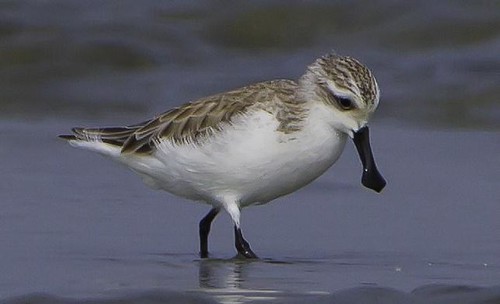
Spoon-billed Sandpiper © BSCP
The first specimen of the critically endangered Spoon-billed Sandpiper (Calidris pygmaea) was collected in the mid-19th century from Bangladesh, which still retains the record for the highest single count anywhere in the world – 202 birds in 1989 from Moulevir Char. Since then a count of more than 100 has never been recorded and numbers have fallen over the years.
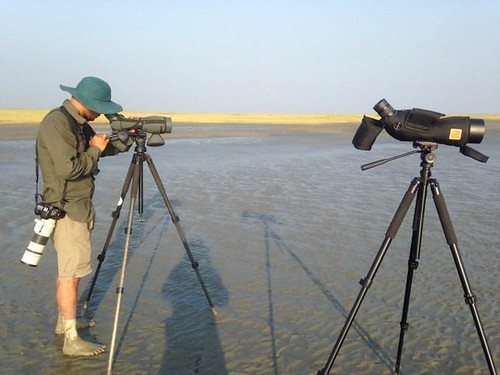
© BSCP
Mindful of its current global status and being motivated to play a significant part in the battle to save this species, I, along with my friends in Bangladesh, took up the challenge to save the last remnants of this species, with a small grant from The Explorers Club. Since then regular surveys have been conducted throughout the winter season in all historical and possible sites of the Spoon-billed Sandpiper with support from different international organisations and the Spoon-billed Sandpiper Task Force. In March 2010 the team counted a minimum of 25 Spoon-billed Sandpipers on Sonadia Island at Cox’s Bazar, and 23 on Domar Char on the central south coast. These were the highest counts since 1997 from Bangladesh! After the series of surveys we can now say that Bangladesh is still an extremely important wintering ground for the Spoon-billed Sandpiper. We identified Sonadia Island as the key wintering site, and with Domar Char, as passaging sites in Bangladesh. Based on more recent work, the Spoon-billed Sandpiper numbers on Sonadia Island increased in November to 26 (26 in November 2012 and 22 in November 2013) reduced to 20 in January (16 In January 2013 and 20 in January 2014) and again increased in March to 26. These counts indicate that the Sonadia Island is not only important for wintering Spoon-billed Sandpipers, but is also significant for passaging individuals (which possibly winter in Nan Thar, Myanmar).
The 4,916 ha Sonadia Island is in the Cox’s Bazar district on the SE coast of Bangladesh and comprises a wide variety of wetland habitats including mudflats, sand dunes, mangroves, sand bars, lagoons, saltpans and beaches. It was declared an Ecologically Critical Area (ECA) by the Government of Bangladesh in 1999. Apart from the Spoon-billed Sandpiper, Sonadia also supports the endangered Nordmann’s Greenshank (Tringa guttifer), as well as other threatened or vulnerable species such as Great Knot (Calidris tenuirostris) and Black-tailed Godwit (Limosa limosa).
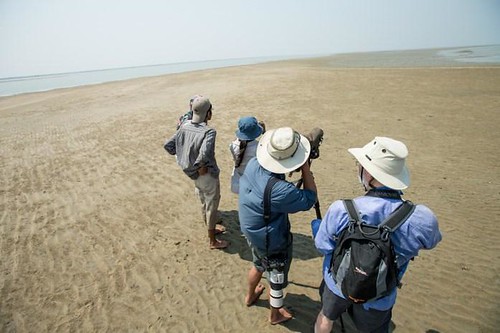
© BSCP
While working on Sonadia Island, we encountered shorebird hunting. Eight hunters claimed to have captured a total of 22 Spoon-billed Sandpipers between October 2009 and April 2010, although they primarily targeted larger shorebirds such as Eurasian Curlew (Numenius arquata) or Eurasian Whimbrel (Numenius phaeopus). Since September 2010, a series of surveys have been conducted to identify hunters and alternative livelihood options for them on Sonadia Island. After a solid year of background work, we finally signed conservation agreements with 25 active shorebird hunters of the island between October and December 2011. Alternative livelihood options taken up include seed and fertilizers for watermelon cultivation, fishing boat, net, livestock, grocery and tailoring (sewing machine) shops. Among these alternatives, the watermelon cultivation was the most successful one. Ex-hunters who cultivated watermelons have earned almost double the amount they used to make by trapping birds.
Village Conservation Groups (VCG) of the five villages on and around Sonadia Island are now monitoring these activities, and ex-hunters repay a small percentage of the income generated by the alternative livelihood to their VCG. The respective VCGs will then use this money for further hunting mitigation and shorebird conservation awareness within these villages. The entire process is being monitored and guided by the Bangladesh Spoon-billed Sandpiper Conservation Project.
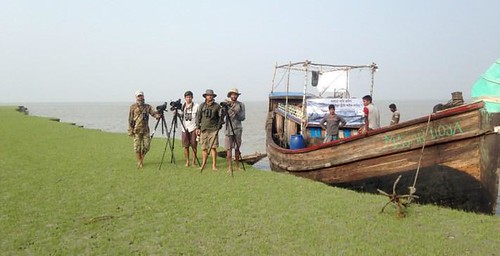
© BSCP
Ex-hunters who have taken alternative livelihood support strongly agreed to protect birds from any sort of threat including hunting and habitat destruction, and assist nature conservation movements in their villages. Also a few of them took specific responsibility to guard and to monitor bird hunting activities at nearby shorebird sites, and these newly ex-hunters are visiting these sites one day every week by rotation.
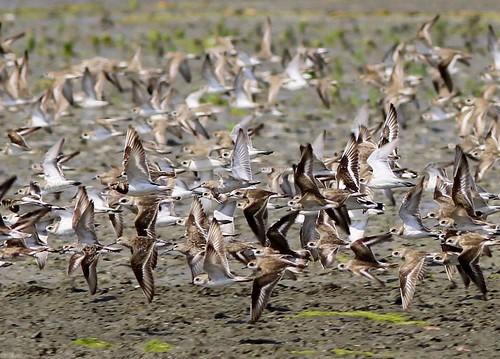
© BSCP
Along with monthly monitoring of shorebirds on Sonadia Island, BSCP conducts surveys in previously unsurveyed areas such as the Sundarbans (2012). As part of the new area search BSCP carried out a detailed survey around Sandwip, Chittagong between 3 and 11 February 2015. A total of 35,000 shorebirds of 24 species were counted including 21 Spoon-billed Sandpipers. This new site is equally important as Sonadia Island in Cox’s Bazar and may support up to 100 Spoon-billed Sandpipers. Further surveys are now being conducted in order to understand more about the site and the Spoon-billed Sandpipers.
We are confident that bird hunting has stopped on Sonadia Island after our conservation agreement scheme and the number of large waders appears to be increasing with the halt of the hunting. Future actions will include a massive awareness campaign in five targeted villages of Sonadia Island, monitoring activities of ex-huntersand engaging them for further motivation. In addition, regular monitoring of shorebirds including wintering, passaging and over-summering Spoon-billed Sandpipers will be carried out on Sonadia Island, Sandwip Island and new areas will be searched throughout the Bangladesh coast.
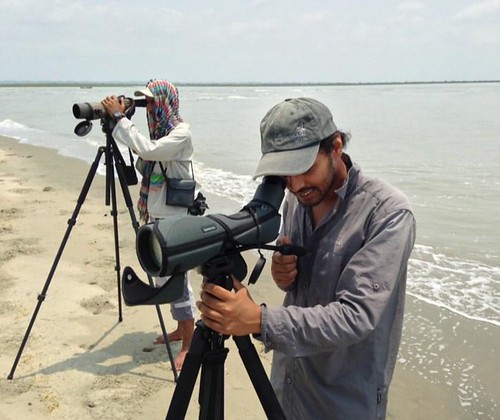
Sayam Chowdhury and Md Foysal surveying the shore © BSCP
References:
Bakewell, D. N. & Howes, J. R. (1989) Further observations on the shorebirds in the Lower Gangetic delta, Bangladesh. Stilt 14: 60.
Bird, J. P., Lees, A. C., Chowdhury, S. U., Martin, R. and Ul Haque, E. 2010. A survey of the Critically Endangered Spoon-billed Sandpiper Eurynorhynchus pygmeus in Bangladesh and key future research and conservation recommendations. Forktail 26: 1–8.
Chowdhury, S. U. 2010. A preliminary shorebird hunting survey in five villages around Sonadia Island, Cox’s Bazar, Bangladesh. BirdingAsia 14: 101-102.
CWBMP .2006. Coastal and Wetland Biodiversity Management Project BGD/99/G31 Sonadia Island ECA Draft Conservation Management Plan. Downloaded from http://www.doe-bd.org/cwbmp/cwbmp_pdf/draft_sonadia_island_eca_cmp040906.pdf on 10/10/2010
Chowdhury, S.U., Foysal, M., Das, D.K., Mohsanin, S., Diyan, M.A.A. & Alam, A.B.M.S. 2011. Seasonal occurrence and site use by shorebirds at Sonadia Island, Cox’s Bazar, Bangladesh. Wader Study Group Bull. 118(2): 77-81.
Chowdhury S.U. & Foysal, M. (2015) New Spoon-billed Sandpiper site and monitoring at Sonadia Island in Bangladesh. Spoon-billed Sandpiper Task Force News Bulletin, 13.
The original article is from Wader Quest the newsletter issue number 4




